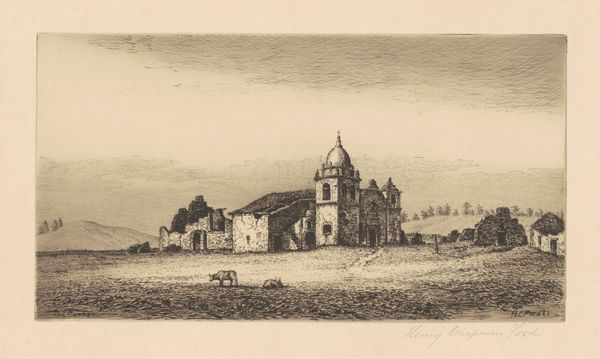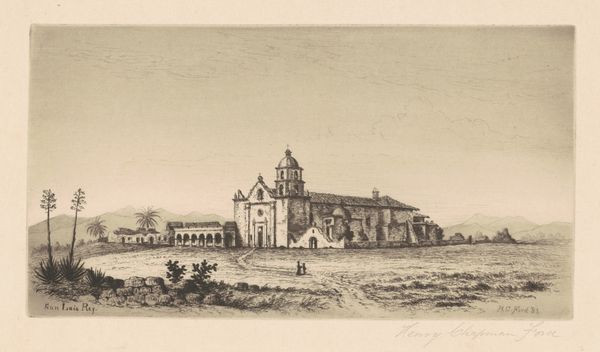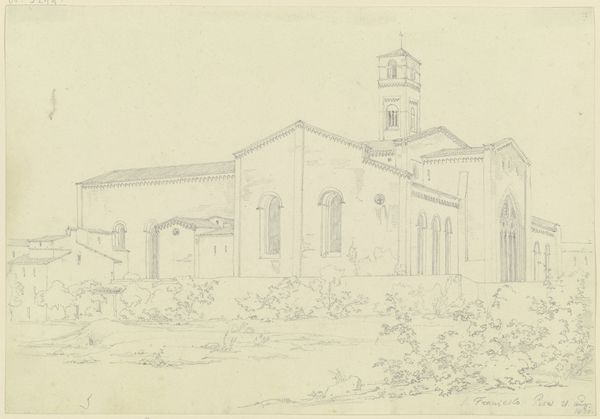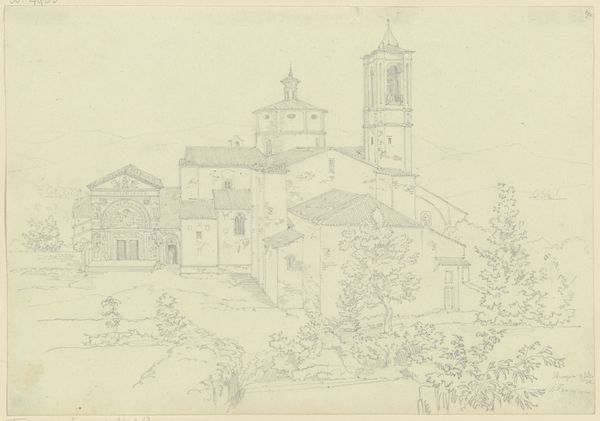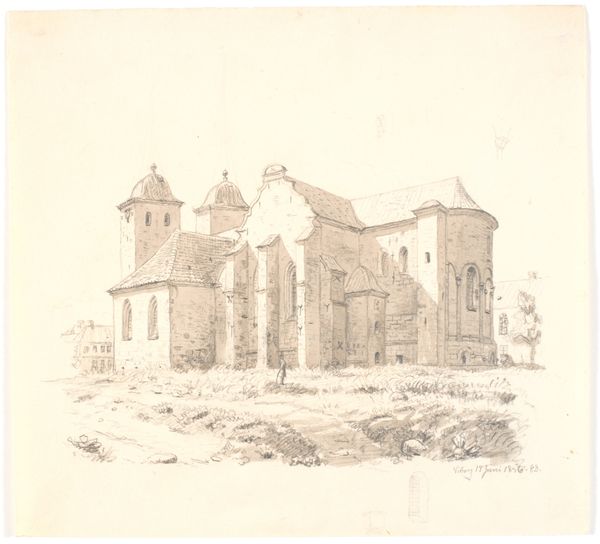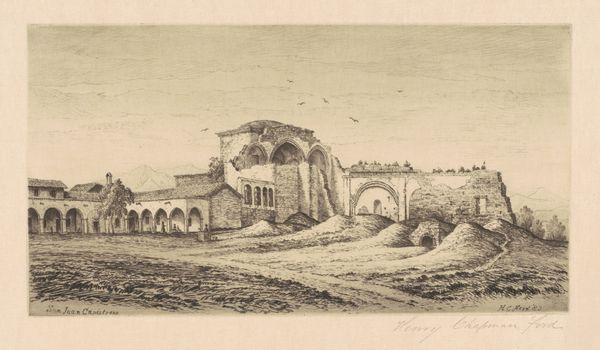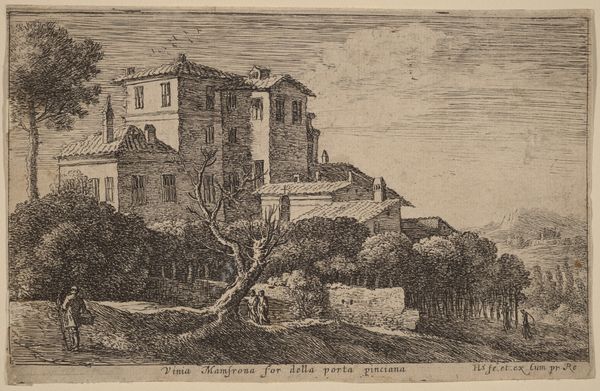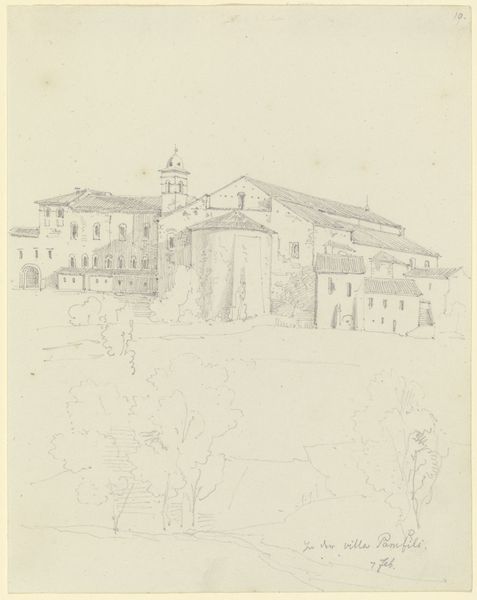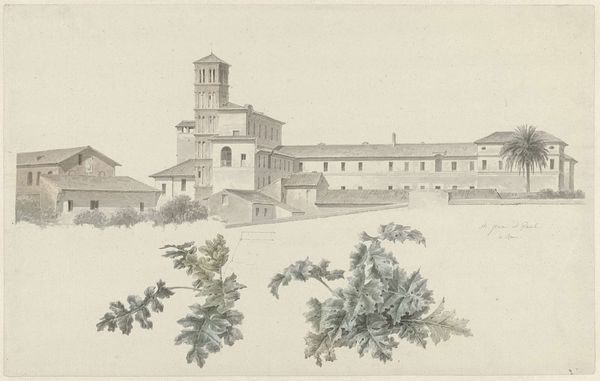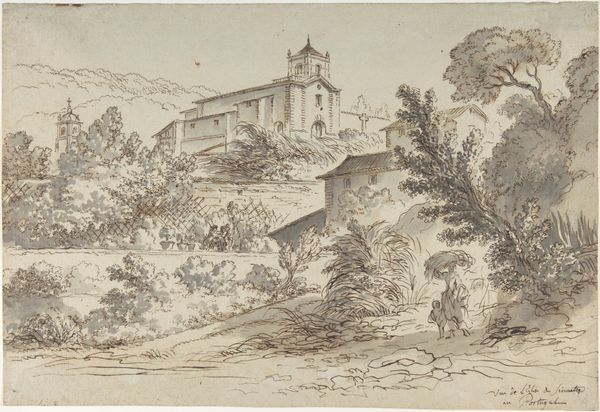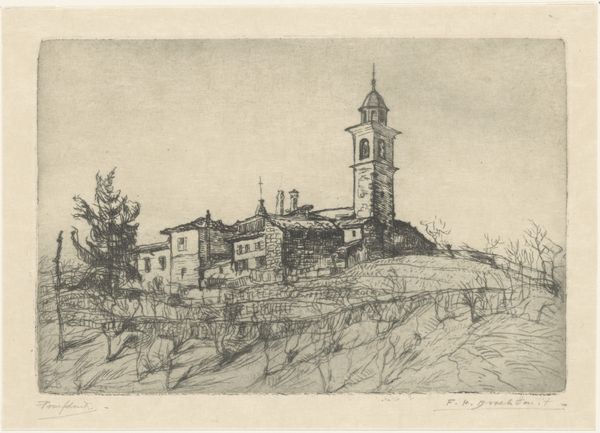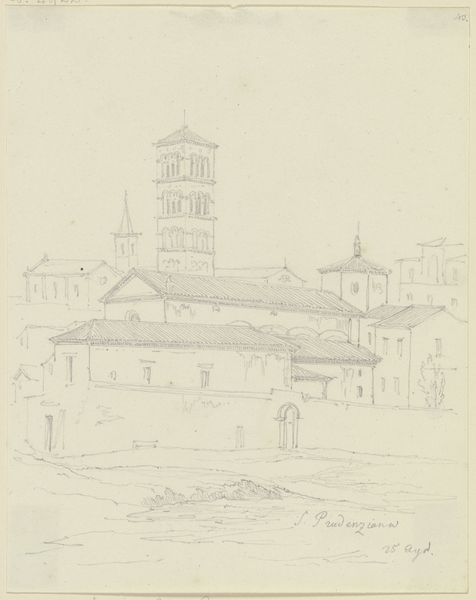
print, etching
# print
#
etching
#
landscape
#
19th century
#
cityscape
#
academic-art
Dimensions: plate: 12.54 × 18.26 cm (4 15/16 × 7 3/16 in.) sheet: 27.15 × 39.69 cm (10 11/16 × 15 5/8 in.)
Copyright: National Gallery of Art: CC0 1.0
Henry Chapman Ford made this print, "Garden, Mission Santa Barbara," in 1883 using etching. Etching is an indirect method of printmaking; the artist covers a metal plate with a waxy, acid-resistant ground. The artist then scratches away the ground with a pointed needle, exposing the metal. Next, the plate is submerged in acid, which bites into the exposed lines. The depth of the lines, and the amount of ink they hold, is controlled by the amount of time the plate is exposed to the acid. The plate is then inked and wiped clean, leaving ink only in the etched lines. Finally, the plate is pressed onto paper, transferring the image. The beauty of etching lies in the artist's hand; each line is deliberately drawn, contributing to the overall texture and tone. Ford's skill captures not just the scene, but also the quiet, contemplative atmosphere of the mission garden. The labor-intensive process mirrors the slow, careful cultivation of the garden itself. Appreciating the craft involved in creating the image allows us to see it not just as a picture, but as a testament to the values of patience and skill.
Comments
No comments
Be the first to comment and join the conversation on the ultimate creative platform.
